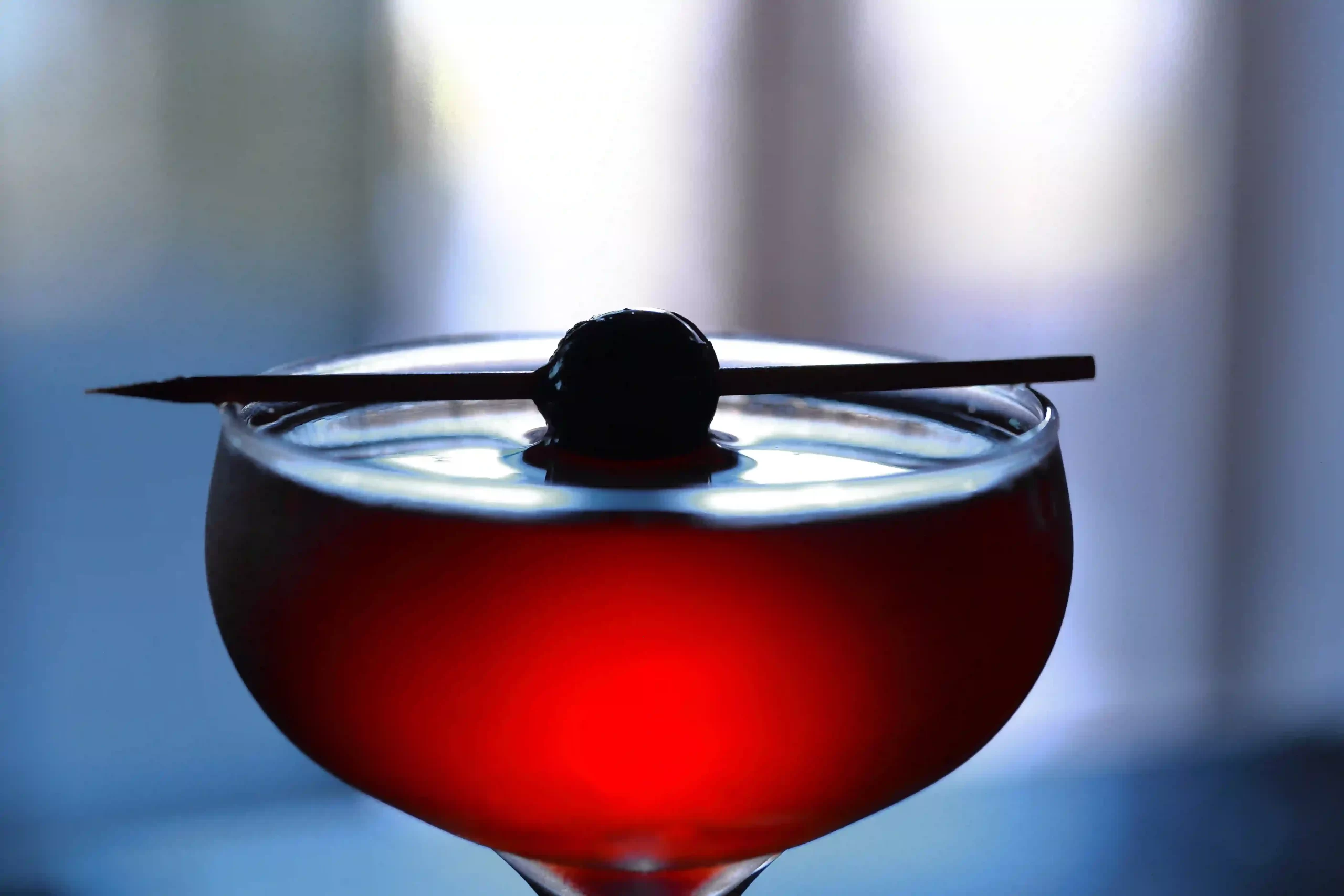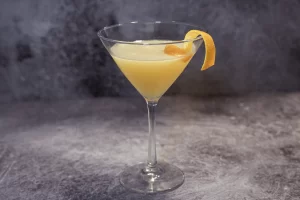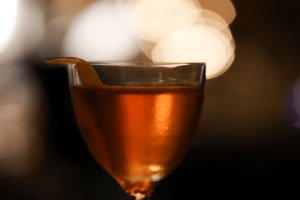The Manhattan has held dominant sway over the world of cocktails longer than any other drink, save possibly the Old Fashioned. It has certainly influenced drinking culture more than any other cocktail. The late, great Gary Regan, bartender and writer extraordinaire, made a keen observation about the Manhattan cocktail. It’s more than a drink, he wrote, it’s a category. The variations on the simple formula that comprise a Manhattan — rye or bourbon whiskey, sweet vermouth, and Angostura bitters — are dizzying in number, easily in the hundreds.
Even with the classic Manhattan cocktail recipe that we’ll be exploring, questions abound. Rye or bourbon? What kind of rye or bourbon? How much and what kind of vermouth? Old Fashioned or cocktail glass? This is a mystical endeavor. There are no right answers (although there are wrong ones). But if you ask your favorite bartender to make you a Manhattan, within the first sip you will know more about them, and hopefully, yourself.
Other Types (1)
Bar Tools
- Mixing Glass
- Barspoon or stirrer
- Strainer
To Serve: Old Fashioned or Rocks glass
Ingredients
A note: there is no standard recipe; such is the magic of the Manhattan. Some prefer a little less sweet vermouth, some more bitters. This is where you show yourself. What follows is the most standard blueprint.
- 2 ounces Rye or Bourbon whiskey
- 1 ounce Sweet Vermouth
- 3 dashes Angostura Bitters
To Garnish: Maraschino cherry
How to Make
Pour all 3 ingredients into a mixing glass. Add ice. Stir, Strain into a glass.

Nutritional Facts and ABV
- ABV (alcohol by volume): 26%
- Calories in Manhattan: 195
- Total carbohydrates: 5 grams
- Total added sugar: 4 grams
History
More than just differing claims of origin, the Manhattan has generated parallel universes of historical explanation. All we know for sure is it came from New York City in the mid-to-late 19th Century, possibly at the Manhattan Club. The club’s official history claims the Manhattan was created for an election party thrown in November 1874 by Lady Randolph Churchill, Winston Churchill’s mother. The problem with that theory is the Lady was nine months pregnant and in England at the time.
FAQ
Rye or bourbon?
The choice of rye or bourbon whiskey is a major fork in the road. Rye whiskey has a spicier, more robust flavor, while bourbon has a mellower, sweeter taste.
Bourbon has become the Manhattan cocktail’s more common base spirit in recent years, but straight rye was probably the choice spirit in the 19th Century. This is a matter of personal preference, but there may be a good reason this cocktail has survived across three centuries; it began with rye.
Foremost drink historian David Wondrich argues that which you chose is less important than making sure it packs a punch. “For a Manhattan, you need whiskey,” he wrote in a Tweet. “Straight rye whiskey, good and strong. If you don’t [have rye], a strong bourbon will work just fine (better in fact than an 80-proof rye).”
What kind of sweet vermouth?
When choosing a sweet vermouth for your Manhattan, it’s important to select a high-quality brand that has a rich, complex flavor. Some popular options for sweet vermouth in a Manhattan include Carpano Antica Formula, Dolin Rouge, and Martini & Rossi Rosso (the aforementioned Gary Regan preferred Noilly Prat Rouge Vermouth).
It’s also worth trying out different brands and styles of sweet vermouth to see which you prefer in your Manhattan. Ultimately, the choice of sweet vermouth will depend on your personal taste and the flavor profile you’re looking to achieve in your own private Manhattan.
Some modern adherents to a drier style of Manhattan have reduced its vermouth ratio, which is a mistake. Sweet vermouth is an essential ingredient in a Manhattan cocktail and needs its spot at the forefront of the stage. In fact, it’s really part of its claim to fame — historically, it was one of the very first cocktails that called for vermouth as a modifier.






